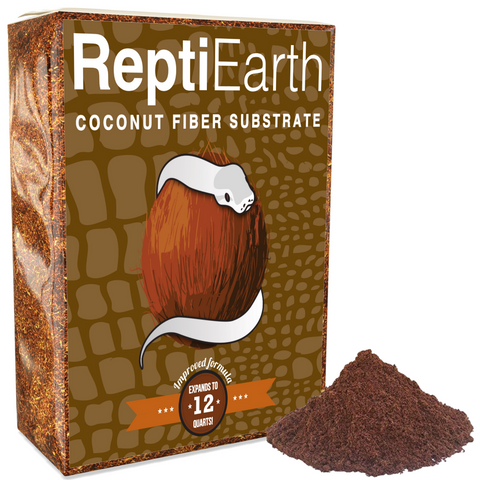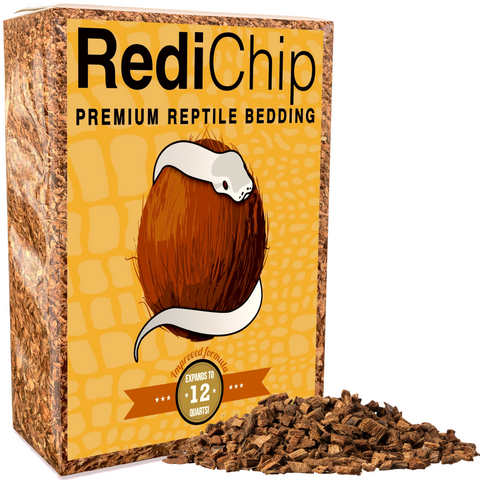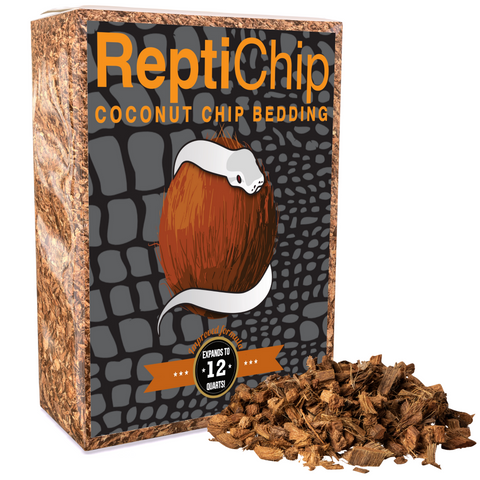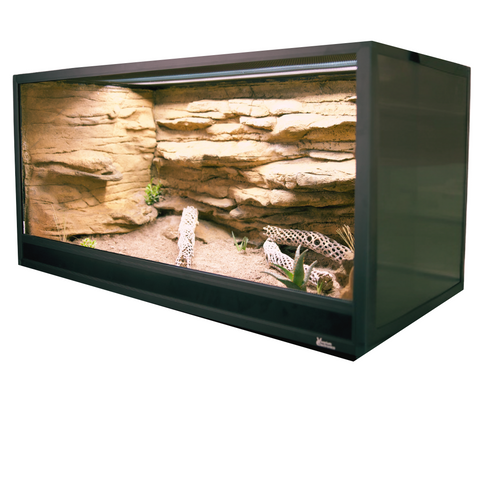Natural History
Native to the lowland and montane forests of South America, this slender and fast-moving colubrid is an arboreal species well adapted to life in dense vegetation. From the moment they hatch, these snakes exhibit a strong instinct for climbing and hunting. Hatchlings measure approximately 12 to 16 inches in length and grow rapidly within their first year, feeding primarily on small lizards and amphibians. Growth continues steadily, though at a slower rate, as they approach sexual maturity at around two to three years of age. In captivity and under ideal conditions, they can live 12 to 15 years, though wild lifespans may be shorter due to predation and environmental pressures. During the breeding season, females lay clutches of 5 to 12 eggs, typically hiding them in humid microhabitats such as leaf litter or rotting wood. The eggs incubate for roughly 60 to 90 days before hatching, with no parental care provided beyond selecting an optimal nesting site.
Highly agile and alert, these snakes exhibit a variety of fascinating behaviors. As ambush predators, they rely on their speed and precision to capture prey, striking with remarkable accuracy. Though primarily arboreal, they will descend to the ground when foraging or moving between hunting areas. Their elongated heads and large eyes indicate their reliance on keen vision, crucial for detecting movement in dense foliage. While generally solitary, they may tolerate conspecifics in overlapping territories, though direct interactions outside of breeding are rare. They are most active during the day, making them diurnal hunters that take advantage of warm temperatures to regulate their metabolism. When threatened, they rely on their cryptic coloration to blend into the surrounding vegetation, but if further provoked, they may exhibit defensive behaviors such as rapid escape, body inflation, or striking. Despite having mild venom, they are not considered dangerous to humans, as their venom primarily subdues small prey.
As a mid-level predator, this species plays a crucial ecological role within its native environment. It helps regulate populations of small vertebrates, particularly lizards, amphibians, and occasionally small birds, thus contributing to maintaining balance within the ecosystem. In turn, these snakes are preyed upon by birds of prey, larger snakes, and some mammalian carnivores, making them an integral part of the food web. Their arboreal tendencies allow them to navigate forest canopies with remarkable efficiency, taking advantage of a habitat niche that many other snake species do not fully exploit. The species' presence helps sustain biodiversity by preventing overpopulation of certain prey species, indirectly supporting the health of their ecosystems. With increasing habitat loss due to deforestation, their populations face localized pressures, yet they remain a resilient and adaptable species capable of surviving in various forested environments.
Conservation Status
The conservation status of this species is currently listed as Least Concern on the IUCN Red List. This classification indicates that, while the species is not currently facing an immediate risk of extinction, it is still subject to pressures that could impact future population stability. The designation reflects a relatively wide geographic distribution within its native range, as well as a stable or slowly declining population that has not yet reached thresholds for a more threatened category. However, this status does not imply the species is free from risks, as ongoing environmental changes and human activities continue to influence its long-term viability in the wild.
The primary threats facing this species in its natural habitat include deforestation, habitat fragmentation, and agricultural expansion. As tropical forests are cleared for farming, infrastructure development, and logging, the species loses critical habitat required for shelter, foraging, and reproduction. This destruction leads to population declines, particularly in areas where deforestation is severe. Additionally, the illegal pet trade has contributed to localized population depletion, as individuals are sometimes harvested from the wild for commercial sale. Although this species is not among the most commonly trafficked reptiles, unsustainable collection practices can still pose a risk in certain regions. Invasive species, including introduced predators such as domestic cats and dogs, also contribute to localized population pressures by preying on juveniles or competing for food resources. Climate change may exacerbate these risks, as temperature shifts and changing precipitation patterns alter the ecosystems on which this species depends.
Conservation efforts for this species primarily focus on habitat protection and regulatory measures aimed at mitigating the impact of deforestation and illegal trade. While no species-specific, large-scale conservation programs are currently in place, many of the regions where this snake is found are covered by protected areas, such as national parks and forest reserves. These designated conservation zones provide crucial habitat where populations can thrive with less human interference. Efforts to regulate habitat destruction through sustainable land use policies also benefit this species, as maintaining intact forest ecosystems helps preserve viable populations. In terms of legal protections, various national and international regulations govern the trade of wild reptiles, ensuring that collection and exportation practices do not reach unsustainable levels. Captive breeding programs have been established within the pet trade, helping reduce pressure on wild populations by providing an alternative to wild-caught individuals. However, further research is needed to fully understand the species' population dynamics and the effectiveness of existing conservation measures. Continued monitoring and habitat preservation will be essential to ensuring this species remains stable in the future.
Native Range
Native to South America, this species is primarily found in lowland and foothill regions of Peru, Ecuador, Colombia, and parts of Bolivia. It occupies a relatively restricted range within the western Amazon Basin and adjacent transitional zones. The species thrives in a variety of forested environments, particularly within tropical and subtropical moist forests, where it can be found from near sea level up to elevations of approximately 4,900 feet. Though its distribution is not as expansive as other generalist colubrids, it remains well-adapted to a range of habitats, particularly those with high humidity and abundant vegetation.
The broader ecosystem this species inhabits consists of tropical rainforests and humid lowland forests, where dense vegetation provides both shelter and hunting opportunities. Within these macrohabitats, it favors microhabitats such as the understory and mid-canopy levels, where it can often be encountered basking on branches or actively hunting for prey among foliage. It is a semi-arboreal species, meaning that while it may be found on the forest floor at times, it exhibits a strong preference for climbing and perching on vegetation. Fallen logs, dense shrubbery, and vine-laden trees provide critical structural components within its preferred environment.
Climatic conditions within its range are characterized by warm temperatures and high humidity. Average daytime temperatures typically range between 75°F and 86°F, with nighttime lows rarely dropping below 68°F. Relative humidity levels tend to remain between 70% and 90%, fluctuating slightly based on seasonal rainfall patterns. The species experiences a pronounced wet season, during which heavy rainfall can lead to increased humidity and standing water in some areas. The dry season, while less extreme, still retains considerable atmospheric moisture due to the dense canopy cover and persistent evapotranspiration. Seasonal variations in precipitation may influence the activity levels and prey availability for this species, but temperatures remain relatively stable throughout the year.
Topographical features within its habitat include riverbanks, floodplain forests, and gently sloping foothill regions. Access to water sources such as streams, small rivers, and rain-fed pools is essential for maintaining ambient humidity and sustaining prey populations. The species is often observed in areas with dense vegetation, particularly where broadleaf plants and climbing vines provide ample ambush sites. Unlike strictly terrestrial species that rely on burrowing substrates, this snake benefits from structural complexity provided by fallen branches, leaf litter, and hollow logs that offer refuge and thermoregulatory opportunities.
In regions where deforestation and habitat fragmentation occur, this species may be at risk due to its reliance on intact forest environments. Canopy cover plays a crucial role in maintaining proper temperature and humidity conditions for survival. While adaptable to some degree, it thrives in relatively undisturbed forests where a consistent supply of amphibians, reptiles, and small mammals serves as its primary food source. The availability of vertical climbing surfaces and a stable microclimate are fundamental components of its ecological niche, shaping both its behavior and physiological needs.
Behavior
The species is primarily diurnal, exhibiting peak activity during daylight hours as it actively searches for prey. In its natural habitat, it moves with agility through shrubs, trees, and open areas, utilizing both arboreal and terrestrial environments. Activity levels fluctuate with seasonal changes, increasing during warmer months when prey availability is higher and decreasing in cooler periods. While true brumation is not observed in this species, individuals in regions with significant temperature fluctuations may undergo periods of reduced activity during colder months. During the breeding season, males exhibit increased movement and heightened aggression as they search for potential mates, often engaging in competitive interactions with other males.
This species is typically solitary outside of the breeding season. Encounters between individuals outside of mating contexts are rare and can be met with avoidance or defensive displays, particularly in situations where resources such as basking sites or prey are limited. Courtship involves persistent pursuit by the male, who may use body positioning and subtle tactile cues to stimulate a receptive female. Unlike some reptiles that exhibit complex parental investment, this species provides no parental care after egg deposition. The female selects a secure location, often within leaf litter or beneath logs, to lay her clutch, after which she abandons the nest, leaving the eggs to incubate independently.
Environmental stimuli have a pronounced effect on this species’ behavior. It relies on high humidity levels to maintain skin health and hydration, often regulating its exposure to dry environments by seeking shaded or moist microhabitats. It is particularly sensitive to temperature fluctuations, with individuals thermoregulating throughout the day by moving between sunlit areas and shaded retreats. Too much heat prompts individuals to take refuge in burrows or dense vegetation, while cooler temperatures lead to slower movement and reduced hunting activity. The species possesses keen vision, used both for detecting prey and identifying potential threats. When responding to predators, it may employ rapid escape behaviors, using its slender body to move quickly through vegetation. Some individuals exhibit a defensive posture in which they flatten their bodies slightly to appear larger, though bluffing behaviors such as striking without biting are rare.
One of the most notable behavioral traits of this species is its active foraging strategy. Unlike ambush hunters, it moves frequently in search of prey, using both visual tracking and chemosensory cues. It flicks its tongue frequently to gather scent particles, assisting in locating small vertebrates, particularly lizards and amphibians. When capturing prey, it relies on swift strikes and mild venom delivered through rear fangs to subdue its target. Although the venom is not considered medically significant for humans, it plays an important role in immobilizing prey before consumption.
Captive individuals often exhibit notable behavioral differences compared to their wild counterparts. While they retain natural hunting behaviors, they may become more accustomed to routine feeding schedules and may respond to regular caretaker presence with curiosity rather than fear. However, stress responses can still occur if handling is excessive or enclosures lack adequate security. Captivity may also reduce the need for extensive thermoregulation, as artificial heating sources provide stable conditions. Unlike in the wild, where individuals retreat to variable microhabitats, captive specimens may develop repetitive movement patterns if enclosures lack sufficient environmental enrichment. Providing climbing structures, varied hiding locations, and a simulated day-night cycle helps encourage more natural behaviors while minimizing stress-related pacing or excessive retreating.
Captivity Requirements
Enclosure Design
When designing an enclosure, it is essential to consider the natural behaviors and spatial needs of this species. Juveniles can be housed in enclosures measuring at least 36 inches long, 18 inches wide, and 18 inches high, but adults require significantly larger spaces to accommodate their active and semi-arboreal nature. A minimum enclosure size for an adult should be at least 48 inches long, 24 inches wide, and 36 inches high, though larger enclosures are preferable to ensure sufficient climbing opportunities and movement space. Glass terrariums with secure, well-ventilated mesh tops or PVC enclosures with front-opening doors are optimal choices, as they provide both visibility and heat retention while preventing escapes.
The interior setup should replicate the natural environment of this species, which primarily inhabits lowland tropical forests, river edges, and wooded areas. Vertical space is critical, as these snakes often climb trees and bushes in the wild. Strong, stable branches, cork bark tubes, and artificial or live plants can provide essential climbing structures that encourage natural arboreal behaviors. A variety of hides should be incorporated at different heights to offer security and reduce stress. Ground-level hides made of cork bark or plastic caves and elevated hides near perches allow the snake to choose preferred resting locations. Basking areas should be positioned strategically, ensuring easy access to heat sources.
Security measures are crucial, as this species is athletic and can be an adept escape artist. Enclosure doors must have secure latches, and the top ventilation should be escape-proof while maintaining airflow. Care should be taken to ensure that all fixtures, including branches and hides, are firmly anchored to prevent collapse or injury.
Lighting and Heating
Proper lighting and temperature regulation are essential for maintaining the health of this species. A temperature gradient should be provided, with a warm basking area maintained between 88°F and 92°F. The ambient temperature in the middle of the enclosure should range from 76°F to 84°F, while nighttime temperatures can drop to around 72°F to mimic natural fluctuations. A heat source, such as a basking bulb or radiant heat panel, should be placed outside the enclosure to prevent burns while creating a focused basking spot. Ceramic heat emitters or deep heat projectors can be used for nighttime heating if the ambient temperature consistently falls below the lower threshold.
UVB exposure is recommended, as this species is partially diurnal and benefits from the presence of UVB radiation to support vitamin D3 synthesis and calcium metabolism. A linear 5-7% UVB bulb, such as a T5HO fluorescent tube, should be positioned about 12 to 14 inches above the highest basking point to ensure proper exposure. The bulb should be placed within a reflective fixture and should not be blocked by glass or plastic, as these materials filter out UVB. The photoperiod should be set to approximately 12 hours of light and 12 hours of darkness, though seasonal variations can be introduced to mimic natural daylight changes. Reducing the day length slightly in the winter and increasing it in the summer can help regulate natural behaviors.
Substrate and Enrichment
Selecting an appropriate substrate is crucial for maintaining enclosure hygiene and supporting the natural behaviors of this species. A substrate blend consisting of a mix of ReptiChip and ReptiEarth replicates the forest floor and helps retain moderate humidity levels. A Bioactive option such as TropicalBase provides a convenient option. Alternatively, a deep layer of aspen shavings or a similar loose substrate can be used, though care must be taken to ensure adequate humidity. Paper towels may be used for juvenile snakes or individuals under medical observation but do not support natural burrowing or enrichment behaviors.
Enrichment is a key aspect of captive care, as this species demonstrates an inquisitive and active nature. Multiple climbing structures should be provided, including thick branches, vines, and elevated resting platforms. Artificial or live foliage can increase enclosure complexity and provide additional cover, reducing stress levels. Hides should be placed in both the warm and cool zones to offer a choice of secure retreat locations. Additionally, introducing scent trails, varying food presentation (such as placing prey in different areas of the enclosure), and occasionally rearranging decorations can stimulate natural foraging and exploratory behaviors.
Humidity and Hydration
This species requires moderate humidity levels, typically maintained between 60% and 70%, although levels can temporarily rise to around 80% following misting. Consistency in humidity regulation is vital, as excessive dryness may lead to shedding issues, while prolonged high humidity can encourage mold growth. To maintain optimal conditions, light misting should be performed once or twice daily, depending on ambient humidity levels. A well-placed hygrometer can monitor fluctuations, ensuring conditions remain within the appropriate range.
A large, sturdy water dish should always be available, as this species will frequently drink from standing water. Placement of the dish in a cooler area of the enclosure helps reduce evaporation. Some individuals may also drink water droplets from misted surfaces, so misting lightly can encourage natural drinking behaviors, particularly during shed cycles. If necessary, a fogger or humidifier can be used to boost moisture levels in drier environments, but it should not run continuously to avoid excessive saturation of the enclosure.
Diet & Supplementation
In its natural habitat, this species is a carnivorous predator with a diet primarily consisting of small vertebrates. It preys on a variety of animals, including birds, small mammals, amphibians, and reptiles. In particular, lizards and tree frogs make up a significant portion of its diet, as these animals are abundant in the species' arboreal environment. It may also consume nesting birds and their eggs, as it is skilled at locating and accessing avian nests within the canopy. Juvenile individuals tend to focus more on smaller prey such as insects and amphibians, while adults shift toward larger vertebrates, including rodents and larger birds. The species is an active forager that relies on a combination of visual acuity and chemical detection to locate prey. It uses its forked tongue to collect scent molecules from the air, which are analyzed by the vomeronasal organ, allowing it to track down potential meals. Additionally, it employs an ambush strategy in some cases, waiting motionless in vegetation until an unsuspecting victim comes within striking range. Unlike constrictors, it subdues prey primarily by grasping and quickly overpowering it with its strong jaws before swallowing it whole. Some individuals may show a preference for a particular type of prey based on availability and learned experience, leading to variations in diet across different populations.
Seasonal and age-related dietary changes are observed in this species, influenced by environmental conditions and prey availability. Younger individuals tend to feed more frequently, as their rapid growth requires a steady intake of nutrients. They primarily hunt small and fast-moving prey such as insects, frogs, and lizards, which require quick strikes and precise aim. As they mature, their feeding frequency decreases, but their prey size increases, enabling them to sustain themselves on fewer but larger meals. Seasonal shifts in diet may occur depending on prey abundance; for example, during the rainy season, amphibians become more accessible and may form a larger portion of the diet, whereas in drier months, the diet may shift toward birds, rodents, or reptiles that remain active year-round. The species' metabolism slows in cooler conditions, reducing feeding frequency, while warmer temperatures promote higher energy expenditure and more frequent food intake.
In captivity, replicating the natural diet as closely as possible is essential for maintaining proper nutrition and overall health. Rodents, such as mice or small rats, are commonly offered due to their availability and balanced nutrient profile. However, a strictly rodent-based diet may not fully match the nutritional diversity of the wild diet, and adding variety is beneficial. Supplementing with appropriately sized birds, chicks, or feeder lizards can help mimic the species’ natural intake more accurately. Captive specimens should be fed on a schedule that reflects their age and metabolic needs—hatchlings and juveniles generally require feeding every 5-7 days, while adults thrive on a diet of one appropriately sized prey item every 10 to 14 days. Calcium and vitamin supplementation may not be necessary if whole prey is provided, but for individuals fed a restricted diet, occasional supplementation with reptile-specific calcium powder can help prevent deficiencies.
Common feeding issues in captivity include prey refusal, which can be triggered by stress, environmental factors, or seasonal changes. Some individuals may refuse meals if they are accustomed to wild prey and have difficulty transitioning to pre-killed rodents. In such cases, scenting techniques—such as rubbing prey with lizard or frog scent—can help encourage feeding. Obesity is a concern if feeding is too frequent or prey items are too large, leading to health complications such as liver disease and decreased mobility. To prevent overfeeding, keepers should monitor body condition and adjust feeding frequency accordingly. Malnutrition can occur if a varied diet is not provided, especially if the snake is only fed rodents without alternative prey options. Enrichment strategies, such as offering prey in different locations, using tong-feeding to simulate live prey movement, or providing climbing structures to encourage natural foraging behaviors, can help maintain the snake’s overall well-being and stimulate its natural hunting instincts. By carefully managing diet and feeding practices, keepers can ensure the long-term health and vitality of this species in captivity.
Reproduction
Sexual maturity in this species is typically reached at approximately 2 to 3 years of age, though this can vary depending on factors such as diet, overall health, and environmental conditions. Males generally mature slightly earlier than females. This species exhibits mild sexual dimorphism, with females tending to be slightly more robust and larger than males. Differences in tail length and body proportions can also aid in distinguishing the sexes, as males typically have longer, more tapering tails due to the presence of hemipenes.
Courtship behavior is initiated when a receptive female begins to emit chemical cues, which males detect using their forked tongues and vomeronasal organs. Males respond by engaging in active pursuit, often displaying rhythmic tongue flicks and physical nudging along the female's body. This species does not exhibit overtly aggressive combat behaviors between rival males, but in the presence of multiple males, competition through chasing or positioning may occur. Once a male successfully courts a female, he will align his body alongside hers and attempt cloacal contact. Mating typically involves the male wrapping his tail around the female's to achieve intromission, and copulation can last anywhere from several minutes to over an hour.
Environmental cues play a critical role in initiating reproductive behaviors. Seasonal changes in temperature and humidity are particularly influential, with slight cooling periods in conjunction with shortened photoperiods mimicking natural seasonal shifts that signal breeding readiness. In captivity, this can be replicated by lowering temperatures by a few degrees for several weeks, followed by a gradual return to optimal conditions. Increased humidity preceding the breeding cycle can also stimulate reproductive activity. Providing naturalistic day-night light cycles and gradual seasonal fluctuations further enhances breeding success.
This species is oviparous, meaning it lays eggs rather than giving birth to live young. Successful breeding requires a properly conditioned female with ample body reserves, as egg production is metabolically demanding. Ensuring a high-protein and calcium-rich diet leading up to the breeding season is essential. A dedicated nesting area should be provided, consisting of a humid substrate such as sphagnum moss, or a mixture of ReptiEarth that holds moisture well. The nesting site should be secluded to encourage oviposition, as females seek out secure locations with stable humidity and temperatures to deposit their eggs. If viable eggs are not laid within the expected time frame, there may be a risk of egg retention or dystocia, which requires immediate veterinary intervention.
Captive breeding can pose several challenges. One of the most common issues is incompatibility between mating pairs. Some individuals may display a lack of interest or even aggressive behaviors toward potential mates. Carefully introducing pairs in a neutral environment and closely monitoring interactions can help mitigate this risk. Additionally, stress due to improper enclosure conditions, frequent disturbances, or inadequate hiding spots can lead to reproductive failure. Maintaining a stable, enriched environment with appropriate temperature gradients, humidity levels, and minimal disruptions is essential. Another challenge involves egg fertility; infertile clutches may result from inexperience, inadequate nutritional provisioning, or failed copulation. Pairing proven breeders and ensuring females are in peak condition prior to mating can improve reproductive success.
By replicating seasonal cues, optimizing diet and hydration, and closely observing mating behaviors, successful breeding in captivity is achievable. However, careful management of breeding pairs, proper nesting conditions, and proactive problem-solving are essential to maintaining the health and reproductive viability of this species in captivity.
Incubation & Neonate Care
Baron’s racers are an oviparous species, meaning they reproduce by laying eggs rather than giving birth to live young. Females typically lay clutches of 5 to 25 eggs, though clutch size can vary depending on the size and age of the female. Gravid females exhibit increased basking behavior to regulate their body temperature optimally for egg development. Nesting sites are usually in concealed, humid environments such as leaf litter, hollow logs, or buried within loose substrate. To replicate these natural conditions in captivity, breeders should provide a secure nesting box filled with a moist substrate such as sphagnum moss, vermiculite, or perlite. The substrate should be moistened to maintain humidity but not saturated, as excessive moisture can lead to fungal growth or embryo failure.
Once the eggs are laid, they should be carefully transferred to an incubator or left undisturbed if the nesting box is within a stable environment. The optimal incubation temperature ranges between 78°F to 84°F, with humidity levels maintained at approximately 75% to 85%. Temperature fluctuations should be minimized, as consistent conditions promote uniform embryo development. The average incubation period typically lasts between 60 and 80 days, though this duration can vary slightly based on temperature and humidity conditions.
As hatching approaches, developing embryos absorb most of the remaining yolk, providing them with sufficient nutrients for their initial days post-hatching. Hatchlings use their egg tooth, a small, temporary structure on the snout, to slit the eggshell in a process known as pipping. This may take several hours or even a couple of days, as neonates rest intermittently before fully emerging. The eggs often hatch in staggered intervals rather than simultaneously. Once hatched, the juveniles should remain in the incubator or the nesting enclosure for at least 24 hours to allow full absorption of residual yolk and to acclimate before transferring to a dedicated rearing setup.
Neonates should be housed separately or in small groups to prevent competition and stress. Individual housing is preferred, as it allows for precise monitoring of feeding and health. A small, well-ventilated enclosure with escape-proof features should be set up with ample hiding spots, such as cork bark or artificial foliage, to reduce stress. A temperature gradient should be provided, with a basking area of about 86°F to 90°F and an ambient temperature of 75°F to 82°F. Humidity should be maintained between 60% and 75%, replicating the species’ natural tropical environment. Providing a shallow water dish ensures proper hydration, and occasional misting can help neonates shed properly.
The first feeding should be offered approximately 5 to 7 days after hatching, once the first shed has occurred. Neonatal Baron’s racers readily accept appropriately sized prey, such as pinky mice, though some individuals may initially require live prey to trigger a feeding response. Pre-killed or frozen-thawed prey is ideal for safety and nutritional consistency. Hatchlings should be fed every 5 to 7 days, with prey size gradually increasing as the snake grows. Care should be taken to observe proper feeding responses, as some neonates may need scenting techniques or environmental adjustments to encourage consistent feeding.
Close monitoring of neonates is essential during the early stages of life, as issues such as dehydration, retained shed, or problematic feeding responses can arise. Handling should be kept to a minimum in the first few weeks to reduce stress and allow proper acclimation. With attentive care, neonates quickly develop into hardy, active snakes that exhibit the characteristic alertness and speed of the species. By maintaining optimal environmental conditions and providing a stable feeding schedule, captive-bred Baron’s racers can thrive from hatchling to adulthood.
Conclusion
Successfully keeping this species in captivity requires an understanding of its natural ecology, behavior, and specific husbandry needs. From enclosure design to feeding strategies, each aspect of care must be tailored to support the snake’s semi-arboreal, diurnal lifestyle. Providing sufficient vertical space, appropriate temperature gradients, and high humidity levels ensures a healthy environment, while a well-balanced diet mimicking its natural prey selection helps maintain optimal nutrition. Additionally, behavioral enrichment, such as climbing structures, varied food presentation, and minimal stress during handling, contributes to the overall well-being of captive individuals.
For breeders, creating optimal conditions for reproduction involves careful consideration of seasonal temperature fluctuations, nesting opportunities, and proper incubation parameters. Hatchlings require individualized attention to develop into strong, self-sufficient juveniles, with feeding behaviors and environmental preferences shaping their early growth stages. Successful breeding programs not only contribute to the species’ understanding but also help reduce pressure on wild populations by providing captive-bred individuals for the reptile trade.
Despite its resilience and adaptability, this species faces ongoing threats in the wild, particularly from habitat loss and human encroachment. Conservation efforts, including habitat protection and sustainable trade regulation, play a role in ensuring that wild populations remain stable. Keepers and breeders can support these efforts by promoting ethical sourcing, participating in responsible breeding programs, and educating others about the ecological significance of this species.
With proper care, this species thrives in captivity, displaying fascinating behaviors that make it a rewarding reptile to keep. However, due to its active nature, specific environmental requirements, and need for experienced handling, it is best suited for knowledgeable reptile enthusiasts who can meet these specialized care demands. By maintaining high standards of husbandry, keepers help ensure the long-term health and success of these snakes both in captivity and in the wild.















